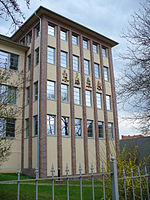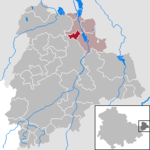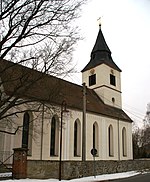Lindenau-Museum

The Lindenau-Museum is an art museum in Altenburg, Thuringia, Germany. It originated as the house-museum of baron and collector Bernhard August von Lindenau. The building was completed in 1876. The museum's main attraction is its collection of Italian paintings from the late Gothic and early Renaissance age (13th–15th centuries), which are among the largest outside Italy. The artworks include Filippo Lippi's St. Jerome in Penance, Sandro Botticelli's Portrait of Caterina Sforza and a predella panel by Fra Angelico. It also keeps ancient antiquities and modern works, and has a library. Additionally, there are collections of paintings primarily from the 16th to 19th centuries and asw well the 20th century, that were created in German, Italy, Netherlands and France. After 1945, collections primarily consisted of artwork created by artists from Berlin, Chemnitz, Dresden, and Leipzig. The art of the 1920s and classical modernism are emphasized in painting and graphic design. One of the most extensive collections of illustrated portfolios of late Expressionism and New Objectivity can be found in the graphic Collection. The museum also has the largest collection of works created by Gerhard Altenbourg (1926–1989) in the entire globe.The museum is a member of the Konferenz Nationaler Kultureinrichtungen, a union of more than twenty cultural institutions in the former East Germany.
Excerpt from the Wikipedia article Lindenau-Museum (License: CC BY-SA 3.0, Authors, Images).Lindenau-Museum
Gabelentzstraße,
Geographical coordinates (GPS) Address External links Nearby Places Show on map
Geographical coordinates (GPS)
| Latitude | Longitude |
|---|---|
| N 50.991888888889 ° | E 12.444888888889 ° |
Address
Lindenau-Museum
Gabelentzstraße 5
04600 , Südost (Altenburg)
Thuringia, Germany
Open on Google Maps








